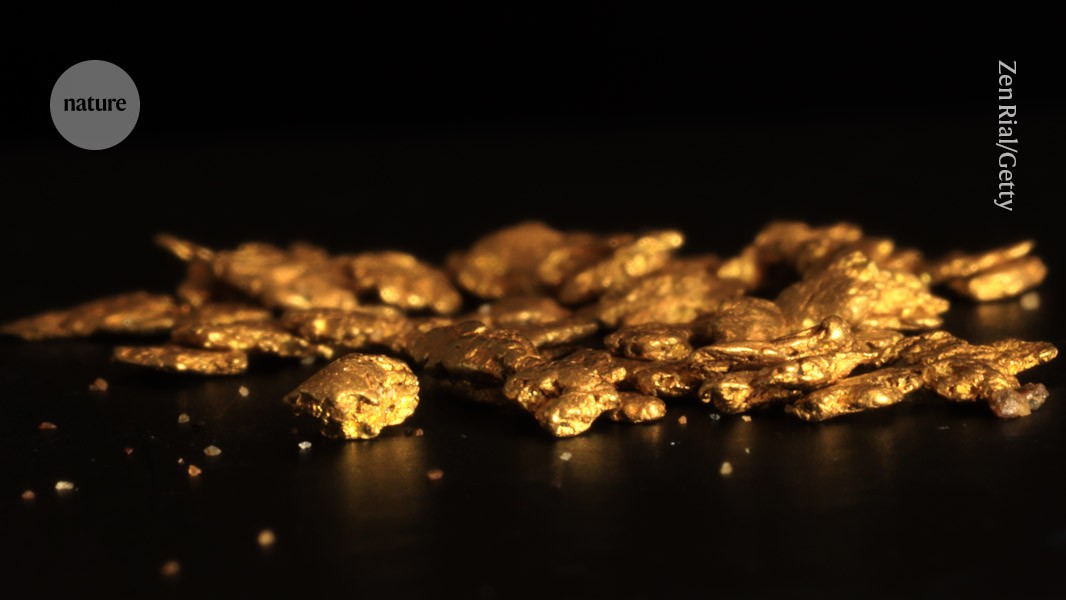Physicists turn lead into gold — for a fraction of a second Understanding the process could help to refine particle accelerator experiments

Colliding beams of lead create fast-moving, short-lived gold ions

LHC experiments don’t create large gold nuggets — but some particles within a beam of lead ions can turn into gold for about a microsecond.Credit: Zen Rial/Getty
The dream of seventeenth-century alchemists has been realized by physicists at the Large Hadron Collider (LHC), who have turned lead into gold — albeit for only a fraction of a second and at tremendous cost.
The not-so-mysterious transmutation happened at CERN, Europe’s particle-physics laboratory, near Geneva, Switzerland, where the multi-billion-dollar LHC smashes together ions of lead for a portion of each experimental run.
Early chemists hoped to turn abundant lead into precious gold. But differences in proton number between the elements (82 for lead and 79 for gold) made that impossible by chemical means.
CERN researchers achieved the feat by aiming beams of lead at each other, travelling at close to the speed of light. The ions occasionally glance past each other, rather than hit head on. When this happens, the intense electromagnetic field around an ion can create a pulse of energy that triggers an oncoming lead nucleus to eject three protons — turning it into gold.
The LHC’s ALICE experiment filtered out these instances of transmutation from the wider collision debris. In an analysis published on 7 May in Physical Review Journals1, the team calculated that between 2015 and 2018, collisions at the LHC created 86 billion gold nuclei — around 29 trillionths of a gram. Most of the unstable, fast-moving gold atoms would have lasted around 1 microsecond before smashing into experimental apparatus or breaking into other particles.

The ALICE detector at CERN.Credit: Maximillien Brice/CERN
Enjoying our latest content?
Login or create an account to continue
- Access the most recent journalism from Nature's award-winning team
- Explore the latest features & opinion covering groundbreaking research
or
Sign in or create an accountdoi: https://doi.org/10.1038/d41586-025-01484-3
This story originally appeared on: Nature - Author:Elizabeth Gibney

















